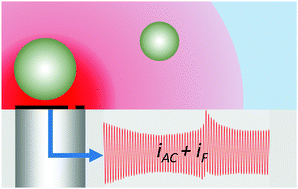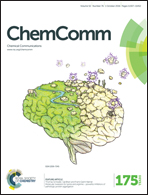Microsecond resolution of cavitation bubble dynamics using a high-speed electrochemical impedance approach†
Abstract
A new method to detect the uncompensated resistance, the capacitance and the Faradaic current at an electrode exposed to ultrasonic cavitation is presented. The method enables these parameters to be resolved with a 2 microsecond resolution and relies on the detection of the impedance of an electrode recorded as a function of time with a suitable AC excitation signal (here 500 kHz). Data obtained from an aluminium electrode, held under potentiostatic control, is used to illustrate the technique with particular relevance to the effects of cavitation bubbles generated by ultrasound. Analysis of the data recorded shows that the cavitation bubbles form close to the surface of the electrode and collapse, causing damage to the passive film formed at the aluminium surface. The capacitance, uncompensated resistance and Faradaic signals are used to explore the dynamic processes and show expansion and collapse of bubbles prior to erosion/corrosion. The close proximity of the bubbles to the surface is deduced from the reductions in capacitance and increases in resistance prior to bubble collapse, which is then shown to trigger the onset of a Faradaic signal, thus confirming the erosion/corrosion mechanism previously assumed.


 Please wait while we load your content...
Please wait while we load your content...